

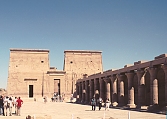
|
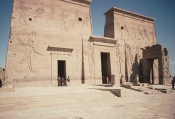
|
The first pylonThis pylon is 18 meters high and about 45 meters wide. In the relief, Ptolemy XII, as pharaoh of Egypt, grasps his prisoners by the hair. |
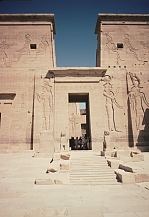
|
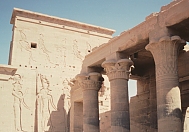
|
In the relief, Ptolemy XII wears the double crown of Upper and Lower Egypt. The gods depicted are Isis, Nephthys, Horus and Hathor. |
The second pylon with the Birth House (mammisi) to the leftAlan Lloyd explains that "one of the distinctive features of major state temples in the Ptolemaic and Roman periods was the provision of a small peripteral temple, invariably placed at right angles to the main temple, for which Champollion coined the term mammisi (an invented Coptic word meaning "birth house"). The Ptolemaic mammisi were usually surrounded by colonnades with intercolumnar screen walls, and they were used to celebrate the rituals of the marriage of the goddess (Isis or Hathor) and the birth of the child-god" (414). (See distant view from the west.) The block of granite set against the pylon commemorates donations of land Ptolemy VI made to the temple; the relief depicts the customary scene of the pharaoh before Isis and Hours. |
||
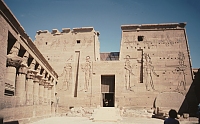
|
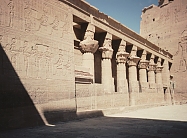
|
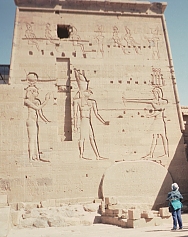
|
Corner of the hypostyle hallThe Hall has 10 columns with polychrome floral capitals. The most sacred sanctuary is behind this hall. |
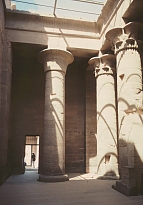
|
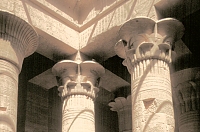
|
Left: side of the Temple of Isis; center; back of the Temple of Isis; right: other temples in the complex |
||
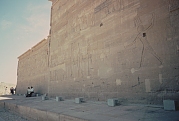
|
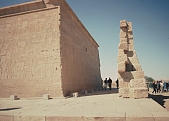
|
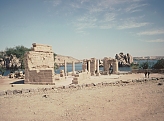
|
 Click here to go to the Egypt Index.
Click here to go to the Egypt Index.
 Click here to return to index of art historical sites.
Click here to return to index of art historical sites.
 Click here to return to index of artists and architects.
Click here to return to index of artists and architects.
 Click here to return to chronological index.
Click here to return to chronological index.
